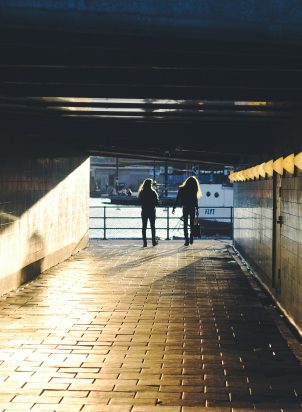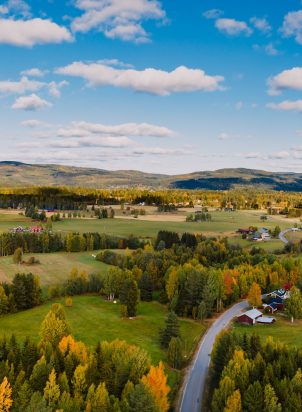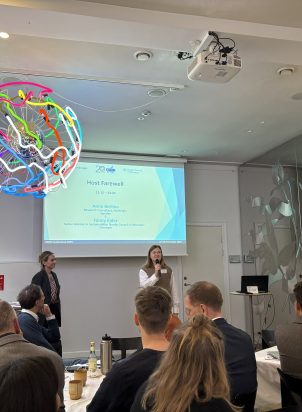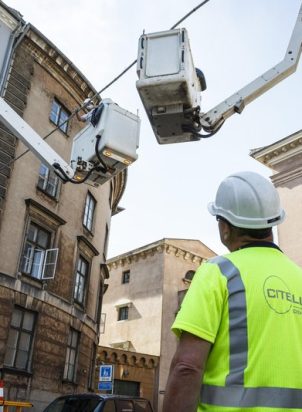How can we use urban planning to create greener, healthier, and more inclusive cities? This was the core question explored on the second day of the annual Nordregio Forum hosted last week in the Innlandet region of Norway.
More than 130 Nordic professionals and policymakers came together in the budding town of Hamar, which is known for its stunning bike trials and impressive diving tower in Lake Mjøsa. This proximity to nature is what Erik Vieth Pedersen, Deputy Director General at the Ministry of Local Government and Regional Development, argued citizens value most in a city. “It seems we like to live in cities, but we also long for green spaces,” he said in his opening remarks.
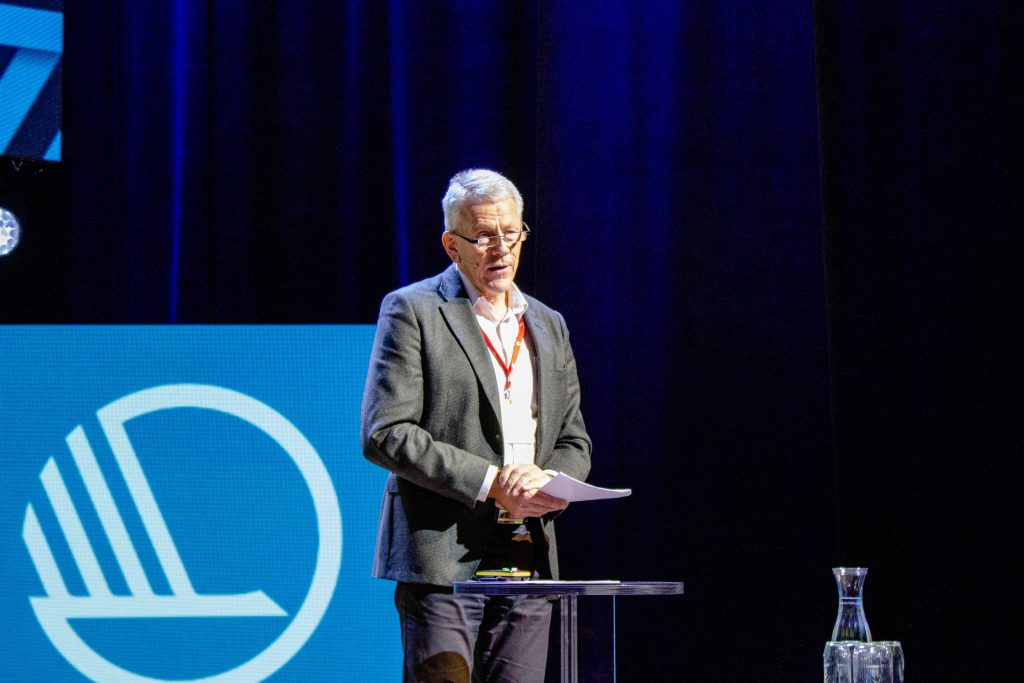
Serving people and nature
This theme was expanded on by Nordregio Senior Researcher Luciane Aguiar Borges who presented the NORDGREEN project, which looks at how high-quality green spaces in cities can promote equity, health and wellbeing.
She noted that urbanisation is a key challenge for public health, and that even before the pandemic around 27% of the adult EU population suffered from mental health problems. “Green public spaces are resources for improving well-being and preventing illnesses, but smart urban planning is the key,” Aguiar Borges explained.
One city that has embraced innovative tools for green space planning is Espoo, the second largest city in Finland. With funding through the NORDGREEN project, they have carried out a map-based survey that has reached more than 6,600 Espoo residents, including 2000 children.
“We asked them to mark places that are meaningful to them on the map, as well as ideas for development and almost 70,000 marks were made in total,” stated Johanna Palomäki, former Espoo city representative in the project. She explained that together with Aalto University they were able to analyse a significant amount of data and that the research will help planners not only understand what kind of environment increases the well-being of local residents but what should be prioritised in future planning.
Else Dybkjær, Landscape Architect in Stavanger, then explained her city’s approach to evidence-based design that will help the city to create spaces that serve the needs of both people and nature. “Some might think: how difficult is it to plant some trees and make it nice? But it is more than that, it is about bringing out the area’s history and telling a story, creating an identity.”
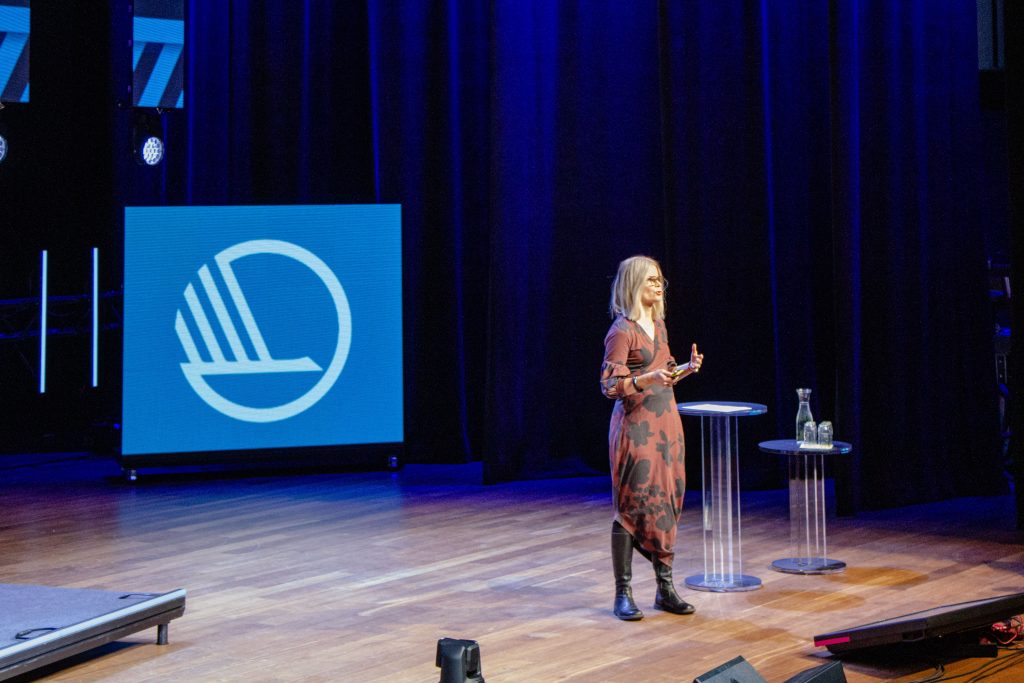
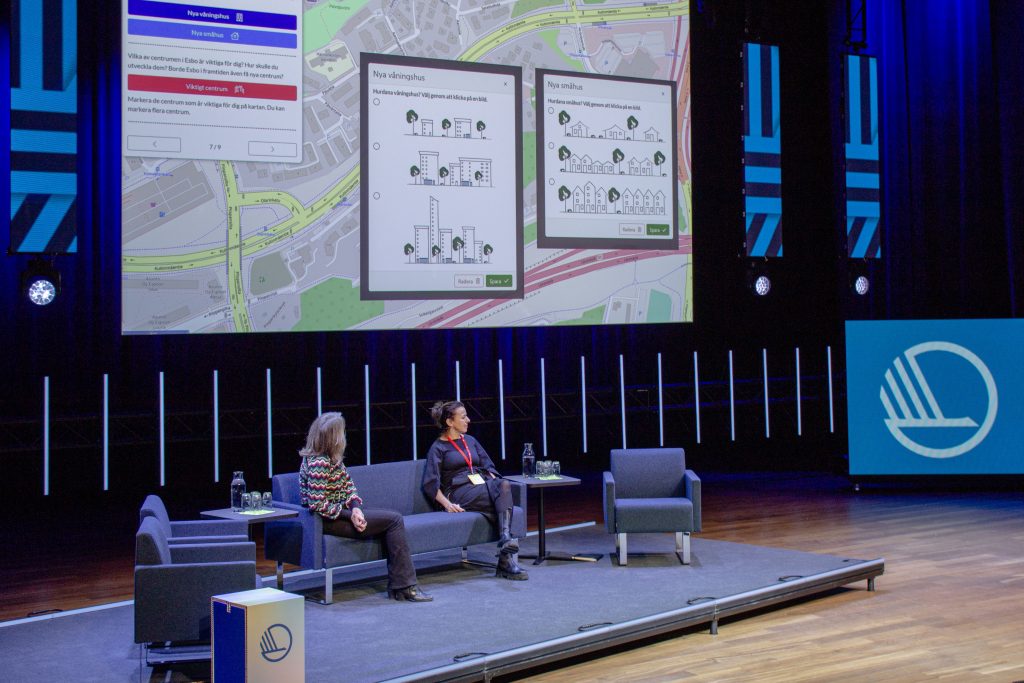
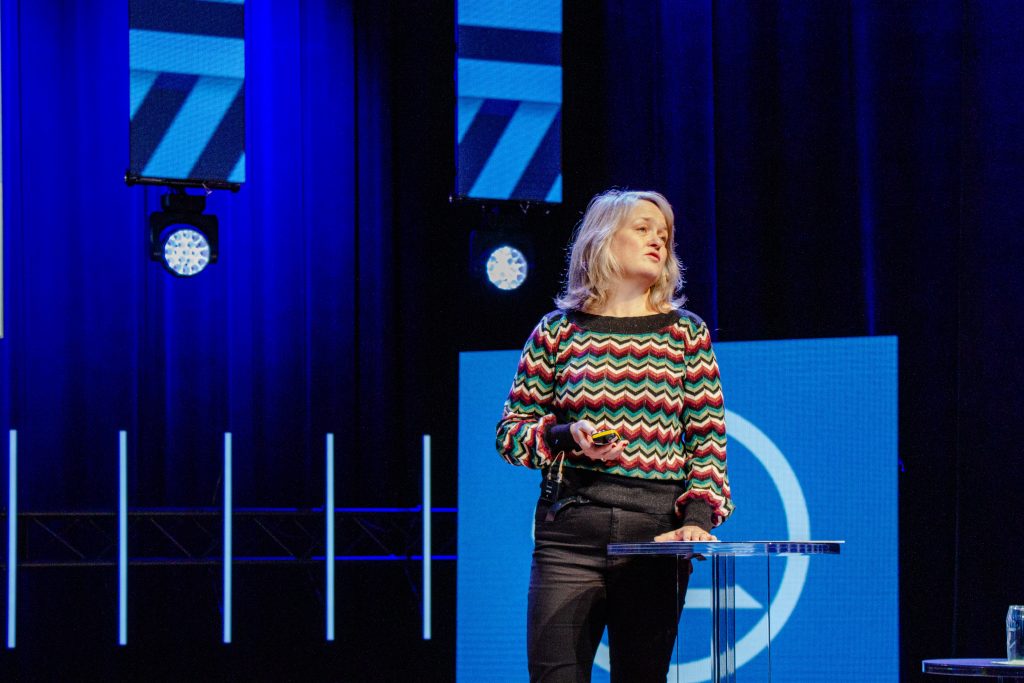
No universal recipe
The history of housing estates was tackled by Mats Stjernberg, Senior Research Fellow at Nordregio, who spoke about planning socially mixed and inclusive neighbourhoods. He noted that Nordic cities have traditionally had low levels of segregation, but in recent decades it has become a growing concern.
“There is no universal recipe to create inclusive cities,” said Stjernberg but went on to explain that Nordic interventions have often focused on regenerating specific areas, such as postwar housing estates. He noted that these area-based approaches are effective in addressing local problems, but they don’t tackle complex root causes of segregation, like unemployment, that inevitably influence neighbourhoods and their development.
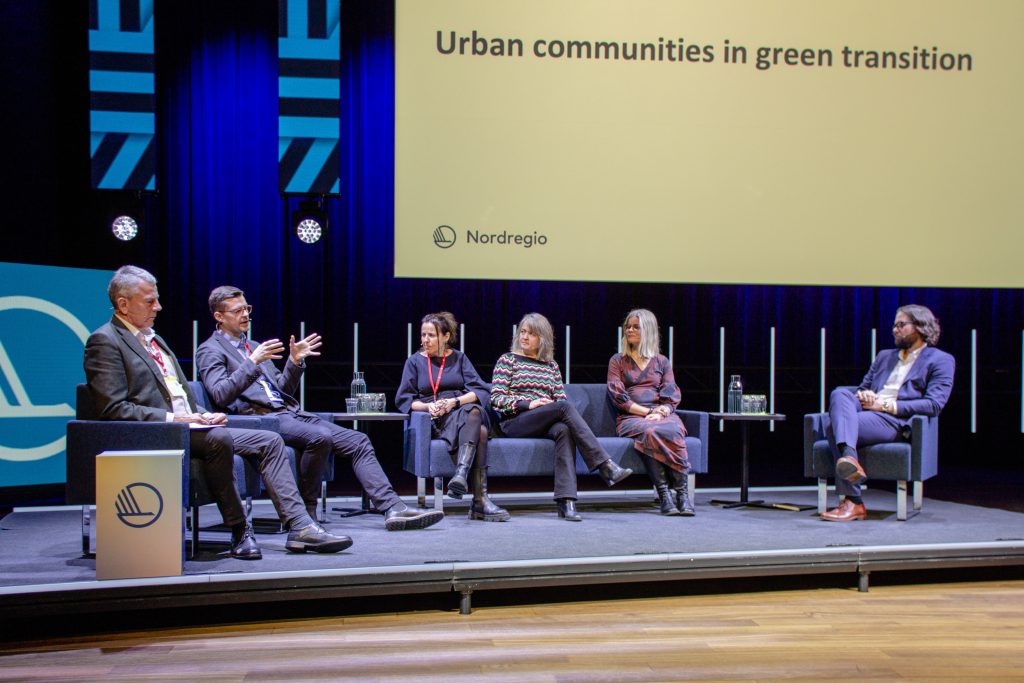
Measuring urban sustainability
From there we turned to another Nordregio Senior Researcher, Timothy Heleniak who spoke about how to measure urban sustainability in the Arctic. He highlighted the example of Luleå in Sweden’s Norrbotten County, where a regional mega-project designed to put Sweden at the forefront of emerging green industries is underway.
“A successful green transition in the north has the potential to reduce Sweden’s greenhouse gas emissions by nearly 10 percent”, explained Helaniak. “But it will be challenging as northern cities must address housing shortages, attract new workers, and expand infrastructure and services.”
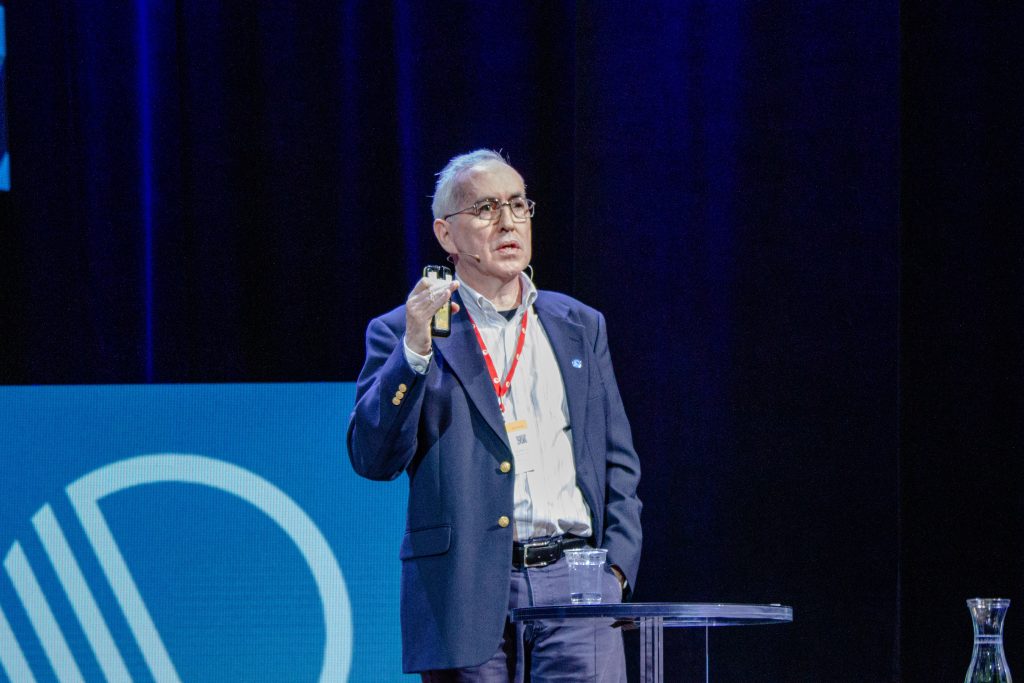
From Arendal to Skellefteå
How cities can face the challenges of the green transition was the focus of the inspiring “Nordic tour” session. We heard from Josefin Carlring, Secretary-General of Föreningen Norden, who spoke about their process to engage Nordic citizens in the transition. “Our goal is to democratize the green transition and engage people from the bottom up,” said Carlring. To do that the civil-society organisation created various tools both online and in person to gather input on the future of the Nordic region, which resulted in the Nordperspektiv publication.
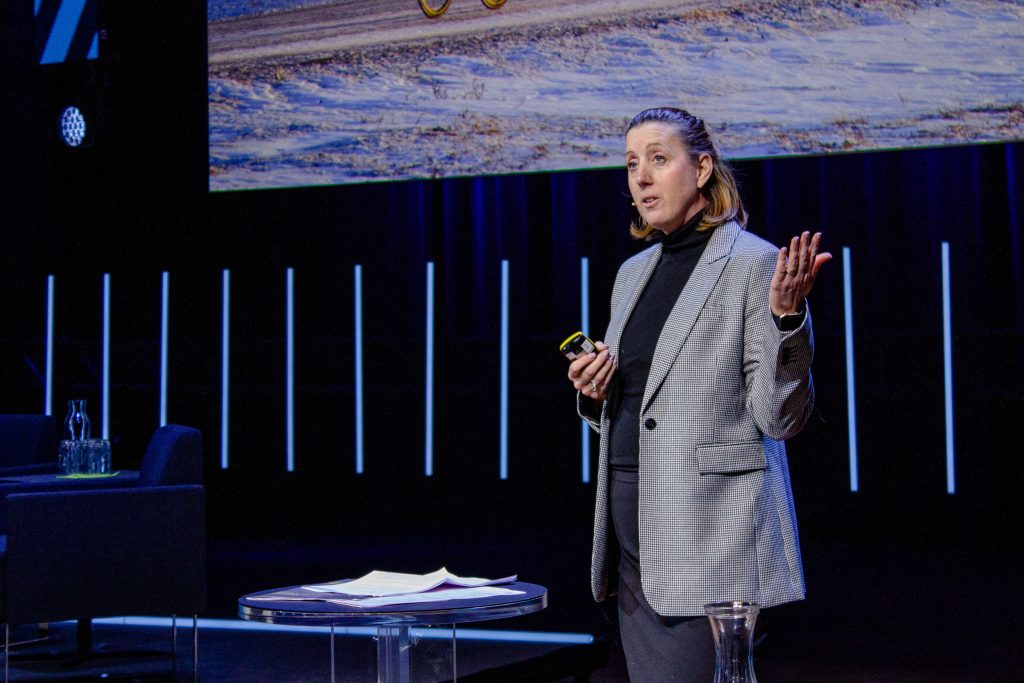
One city that is leading the way and planning for the future is Skellefteå. “We want to create a city that today’s 13 and 15-year-olds will be proud of, said Therese Kreisel, Head of Urban Planning, at Skellefteå Municipality.
More than ten years ago the city decided to rebrand and find ways to nurture both pride and a strong identity based on sustainable solutions. Kreisel underscored the focus has not only been on industry, jobs, and housing but also on culture, which the wooden Sara Kulturhus, is a perfect example of. She noted the city has an ambitious growth plan and will invest in electrified public transport, a refurbished city centre, new railway station and much more in the years ahead.
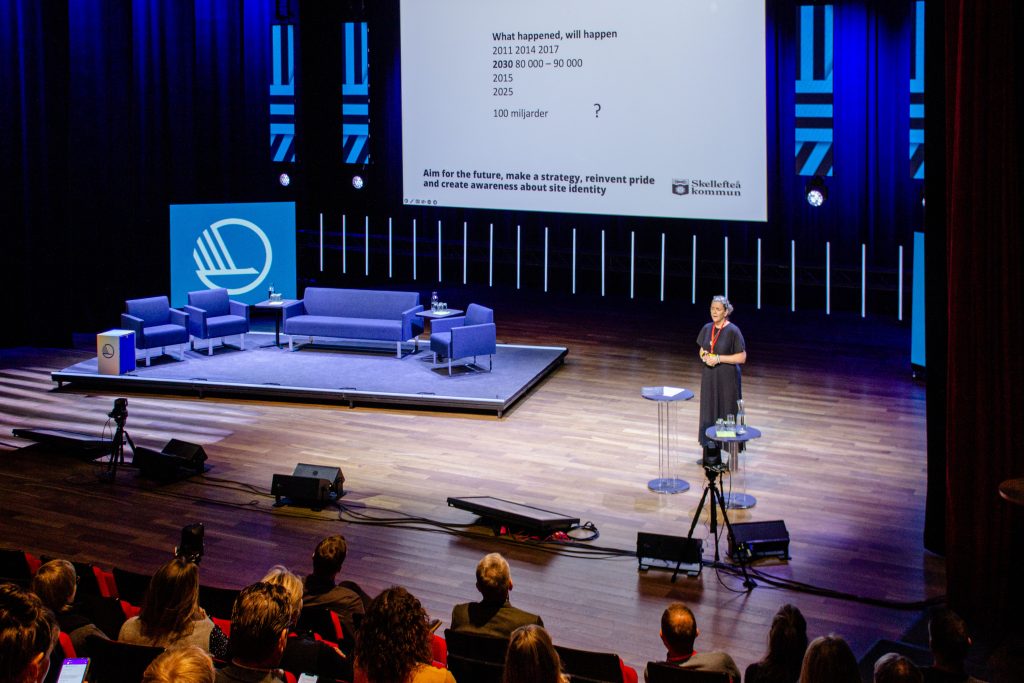
The tour then took us to Arendal in Norway that 15 years ago was perhaps most well-known domestically for its prominent right-wing groups. “Now Arendal is known for its strong local grass root initiatives, co-creation, and transparent city planning,” explained Lisbeth Iversen, Senior Advisor at Arendal Municipality.
They have tackled the revitalization of their city centre, established an Impact hub, and a new battery factory will generate 2000 new jobs in the green industry. But Iversen underscored that the city has also focused on engaging citizens and being more inclusive, with initiatives like a Welcome hub and networks connecting organisations and institutions from the public, private, academic and business communities.
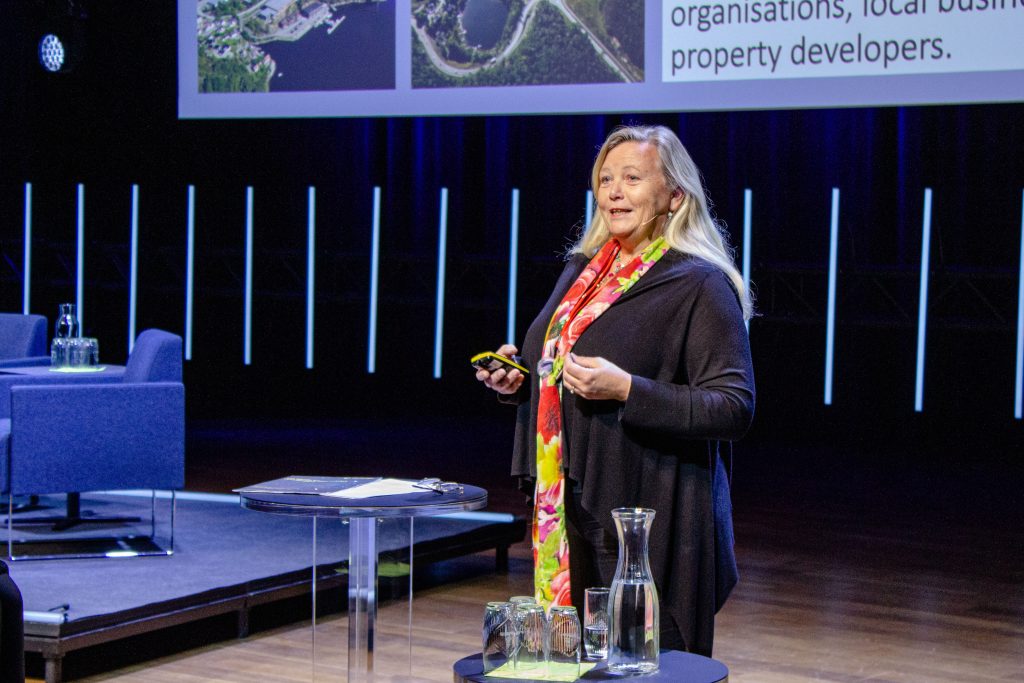
The final stop on the Nordic tour was with Bjarne E. Jensen, Senior Project Manager at the Danish Architecture Centre. He talked about the NYE suburb of Aarhus, which is an exciting new, water-wise, urban district, where citizens can effortlessly live sustainably. For example, about 40% of the water consumption in NYE is covered by rainwater harvesting and a focus on biodiversity, collective gardens, and interactive art has created “a dream society”, according to Jensen.
Tangible examples
Participants left the virtual tour for physical ones in our host city of Hamar. The green transition and circular economy tour first visited the innovative HIAS wastewater treatment plant which has pioneered the Hias® Process. It is a highly advanced and eco-friendly process that not cleans wastewater without chemicals (making it much cheaper than traditional methods), but it also removes phosphorus and creates a high-grade fertilizer. The next stop was the Resirkula shopping centre run by the municipality-owned waste management company Sirkula. The concept is as simple as it is genius: upscale second-hand concept stores located right next to the recycling center, which has not only reduced waste but created new jobs and revenue for the local businesses.
There was also a visit to Hamar’s ByLab which is an informal gathering place in the city centre where citizens can engage with the municipality about the city’s development and relevant social issues. There have been conversations about how to better use the main square, local parks and the waterfront, which has led to urban farming initiatives, new beach life in the summer, and plenty of festivals in the square. The municipality has also created Storymaps to show what parts of the city are going to be developed and to engage with citizens about the plans.
Participants of the innovation and labour market tour learned more about PARK, a creative innovation centre for a growing community of companies and freelancers that work in fields such as VR/AR content, game development and design. They encourage collaboration across industries, areas, and backgrounds and have a digital workshop showroom, as well as Norway’s largest motion capture studio. They also learned more about Arena Innlandet, which is a well-established job fair that focuses on competence development and youth engagement in regional businesses.
From there, participants made their journeys home to different corners of the Nordic region. Hopefully, with the final words from Nordregio Director Rolf Elmér in the back of their mind: “To tackle the green transition in the Nordic countries, we need close cooperation between practitioners and researchers.”


